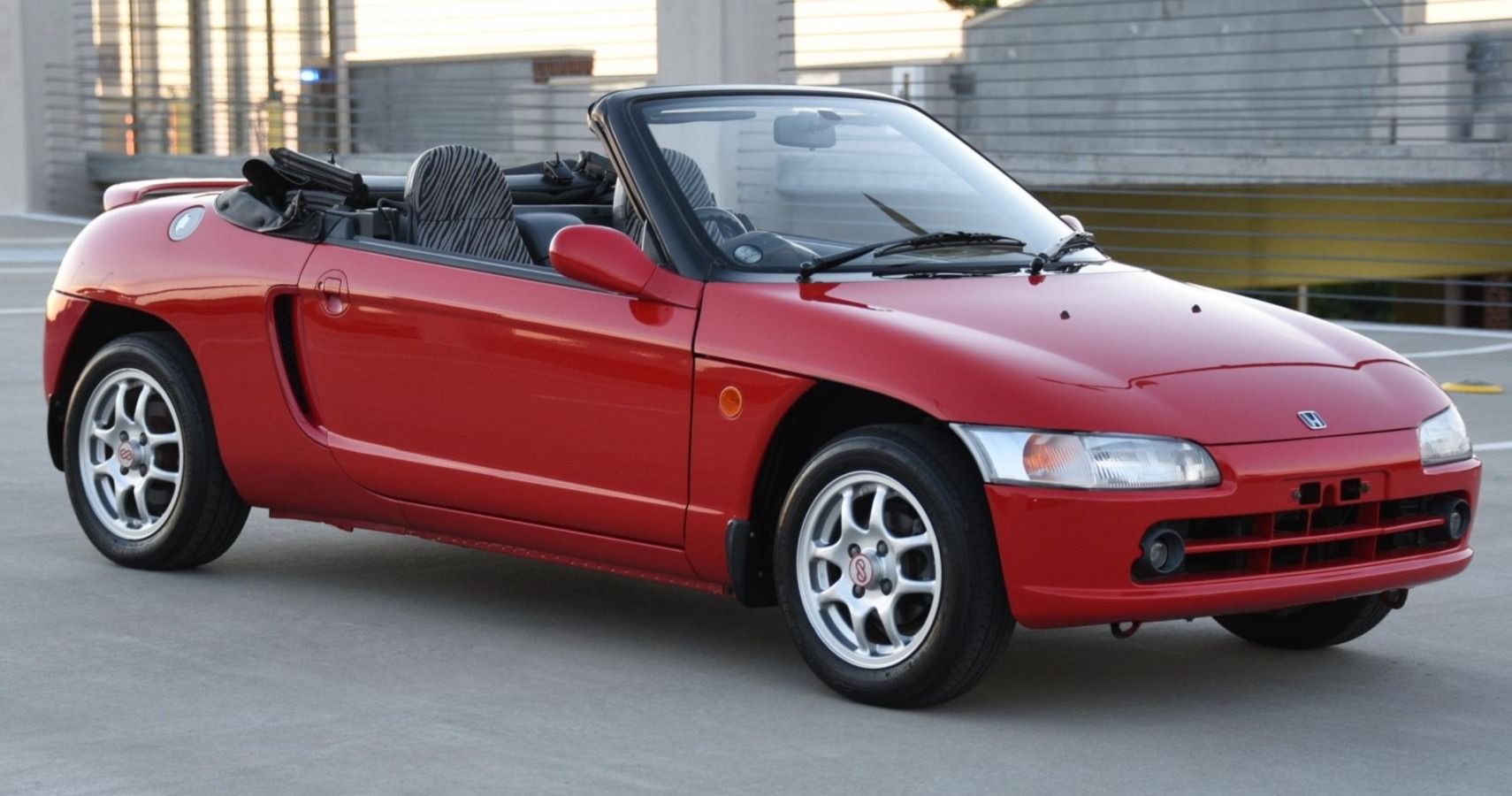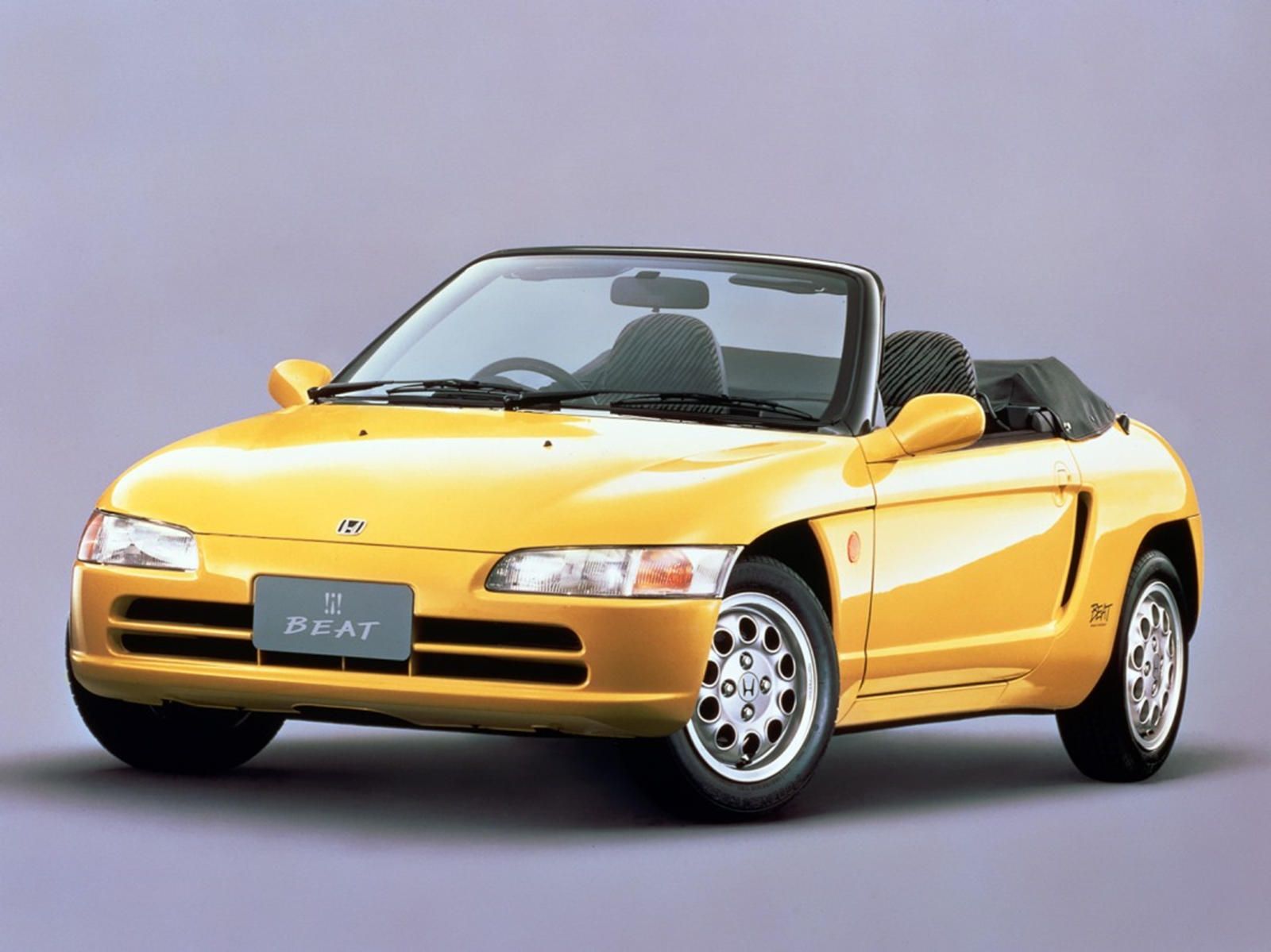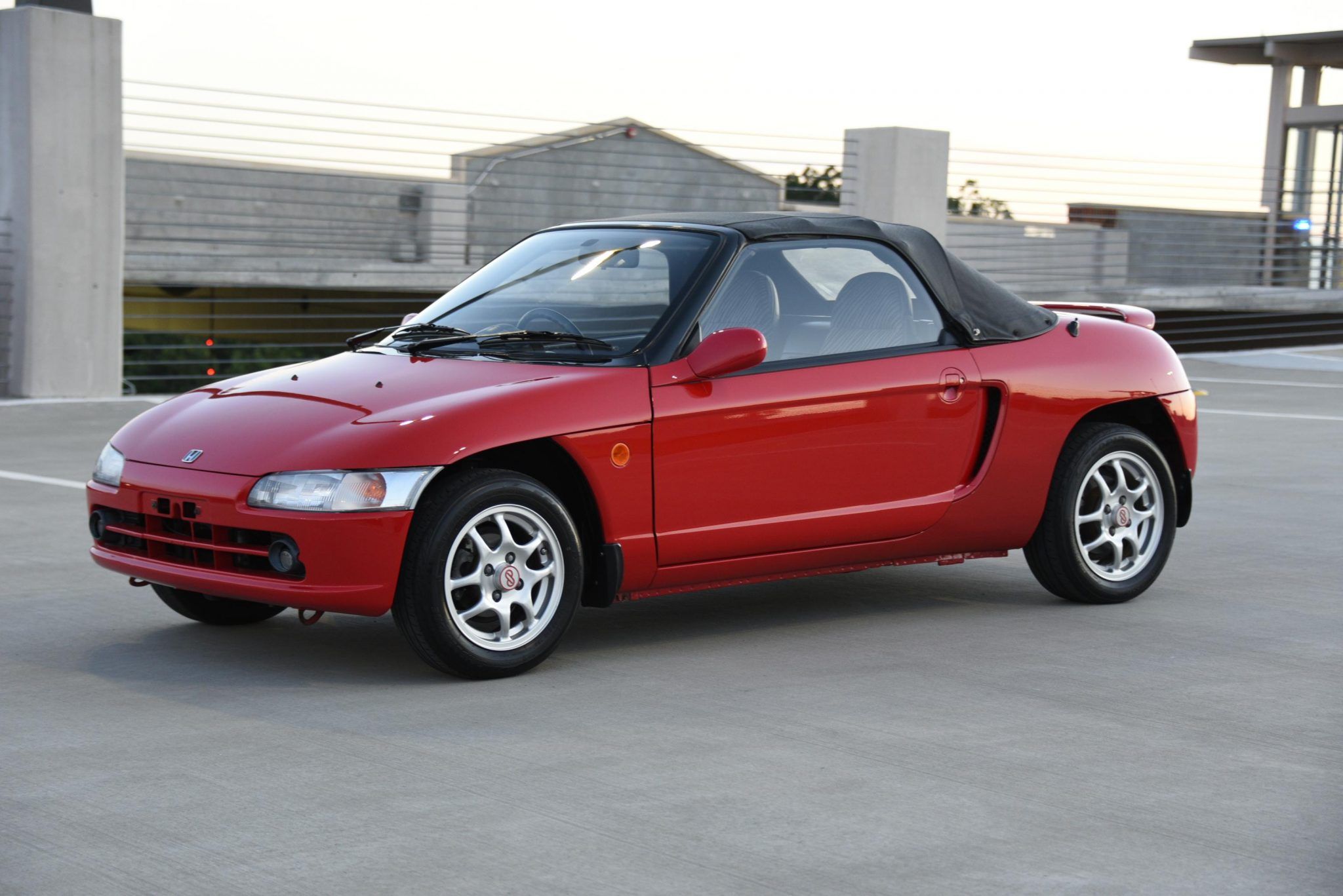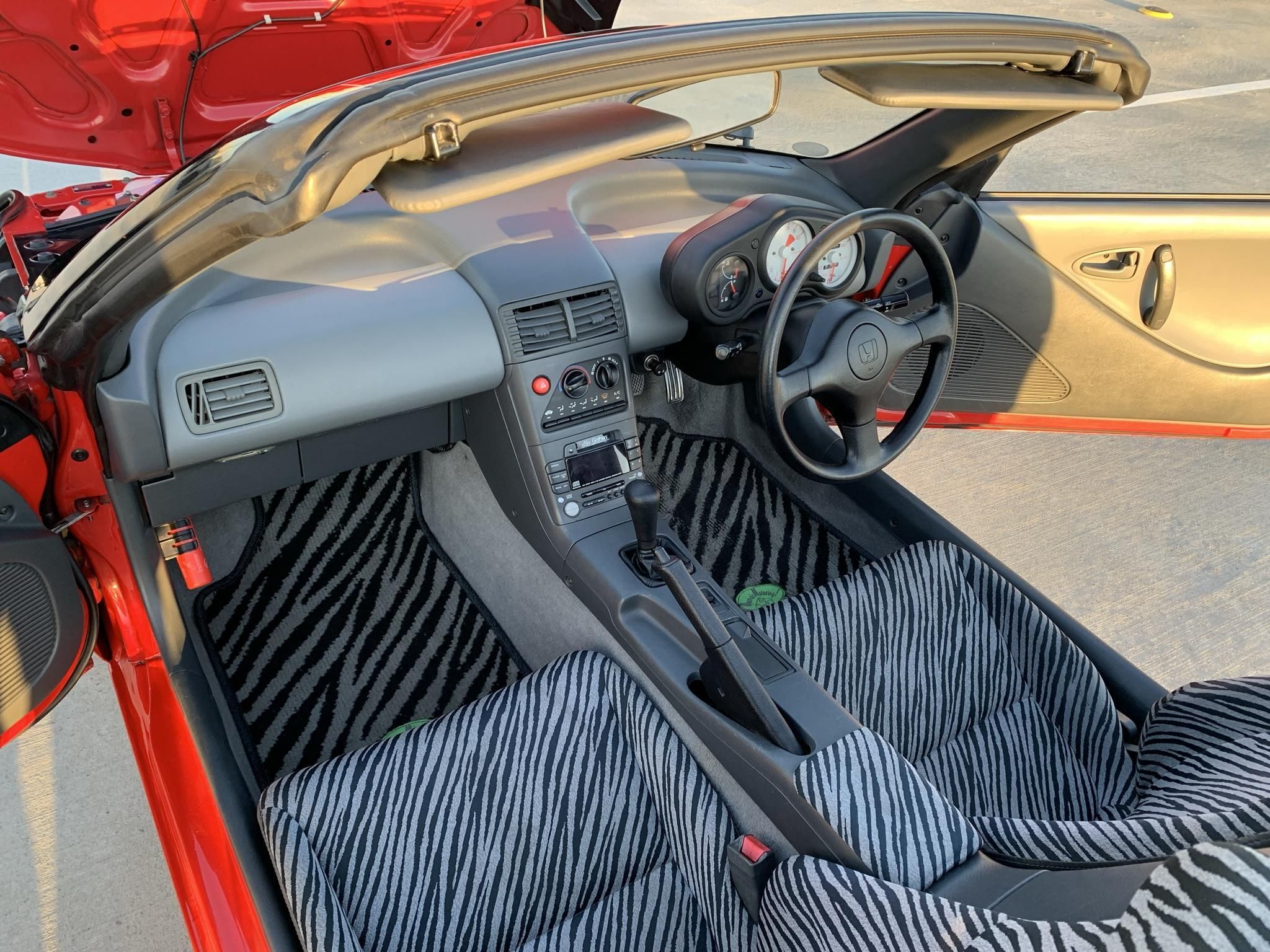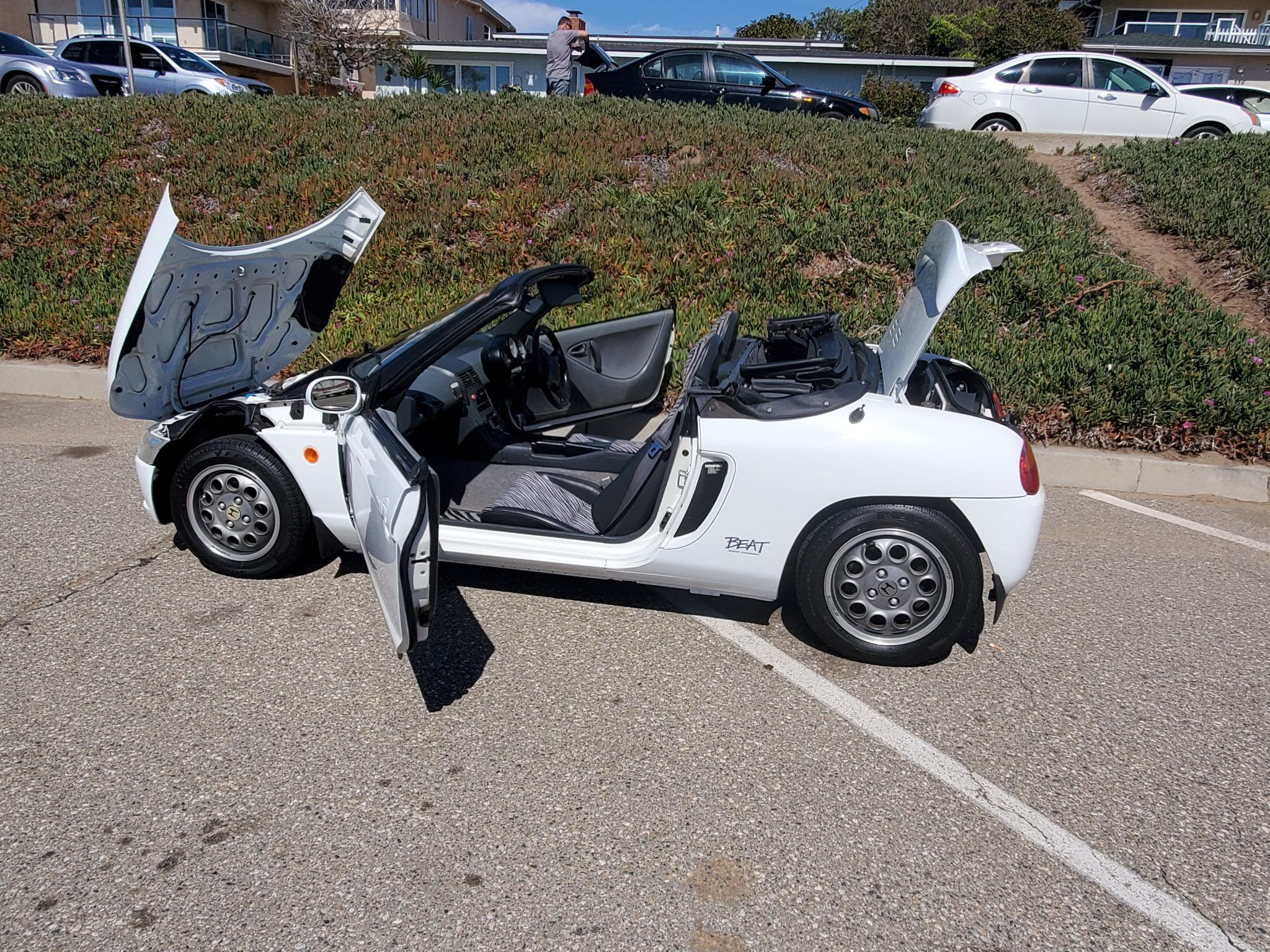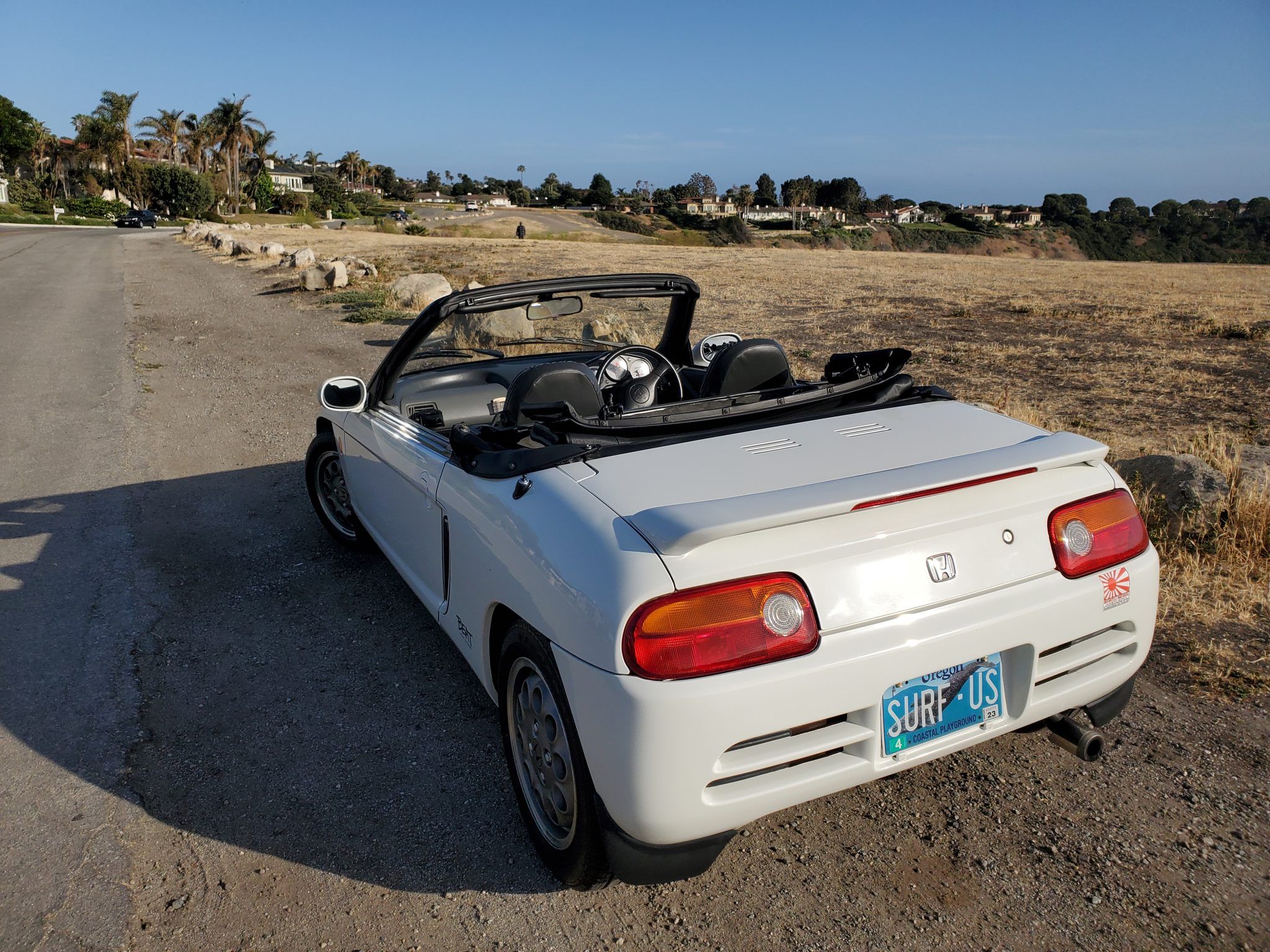The Honda Beat is a critical player in Japan's "Kei" era small car battle. With an ultra subcompact design, the Honda Beat skirts regular car regulations, allowing it to save on weight and consequentially save on fuel and operating costs. Coming in at an overall size that makes even the first generation Mazda Miata seem gargantuan, the Honda Beat is an engaging two-passenger mid-engine roadster with a design focus on urban driving, making the Beat fun in even the most mundane city driving scenarios. Additionally, now that the Beat is over 25 years old and is in its fifth year of being legal stateside importers continue to flood the car market with them, making the Honda Beat a potentially low-cost weekender for car enthusiasts.
Honda Beat Powertrain And Drivetrain
The powertrain of the Honda Beat isn't nearly as aggressive as it appears. Power is from a standard 656CC 63 horsepower three-cylinder that mounts just behind the seats. The trim engine features Hondas MTREC (Multi Throttle Responsive Engine Control) system, which consists of three throttle bodies, one for each cylinder, helping to eke out as much power as possible. A five-speed manual transmission is the sole drivetrain offering, feeding power to the rear wheels through a limited-slip differential, ensuring that all the car's 44 pound-feet of torque reaches the ground. Fuel economy is a strong suit of the Honda Beat, achieving 36.2 mpg combined, though fill ups are still frequent given the car's 6.2-gallon fuel tank.
Honda Beat Performance And Handling
Despite its diminutive engine, the Honda beat packs a lot of fun into a small package. Weighing in at a nearly go-kart-like 1,675 pounds, the Beat entertaining in corners at even low speeds. In a car of this size, it feels as though you are going much faster than you are in reality. The mid placement of the engine helps distribute weight efficiently over both the front and rear.
The Honda Beat reaches sixty in a less than enthralling sounding 13 seconds, with an electronically limited top speed of 83 mph. Though in the same vein as the first-generation Miata, it is so much more than simple 0-60 times and straight-line dashes, this is one of the few cars in the world that enthusiasts can actually enjoy in lower-speed city driving. Though it is more than capable, highway driving in the Beat is a loud experience. At 70 mph, the Beat sits at 5,000 RPM. Its low JDM gears make it more suitable for 45-55 mph dashes around town.
Honda Beat Interior, Quality, And Technology
The interior of the Honda Beat is reflective of its off-beat nature. The first thing occupants notice is a distinct zebra print pattern on the seats, center console, and floormats, a trademark of the Beat. The cockpit features a strong eye toward driver focus. Its design clearly is for enthusiasts. The gauge cluster features a large tachometer in the center, followed by a smalled speedometer to the right. To the left are additional gauges for fuel and temperature, as well as warning lights.
The center stack is typical 1990s Honda formed in hard plastic. Climate controls are up top with a straightforward standard Honda head unit below. Windows switches are in an ergonomic position near the gift shifter. A three-spoke steering wheel is standard, while an airbag is an option. There is no passenger airbag, though safety is something that never goes hand in hand with a car like this. The overall size puts you below the beltline of most American cars, and drivers and passengers over 5'8 will struggle to get comfortable.
Opening the manual top is an easy process. The consumer easily puts it down or up in seconds by only one person. Due to the engine placement, the trunk is tight with room for little more than a carry-on. Unlike most mid-engine cars, there is no front trunk, only a spare tire beneath the clamshell hood. If the consumer needs additional storage, they must forfeit having a passenger.
Honda Beat Pricing
The Honda Beat is in its fifth year of being U.S. legal, thanks to the 25-year foreign car importation rule. However, specialty car importers are not wasting any time bringing the Beat to the hands of U.S. consumers. A plethora of Beats congest the likes of Craigslist and eBay at any given time, thanks to a cult-like following. The Beat itself is also very affordable given its uniqueness, and clean cars can be regularly found for $8-12,000, making it a bargain JDM import. Overall, the Beat is an excellent enthusiast car that consumers can confidently buy at a reasonable price, knowing that they will not lose out on their investment.

